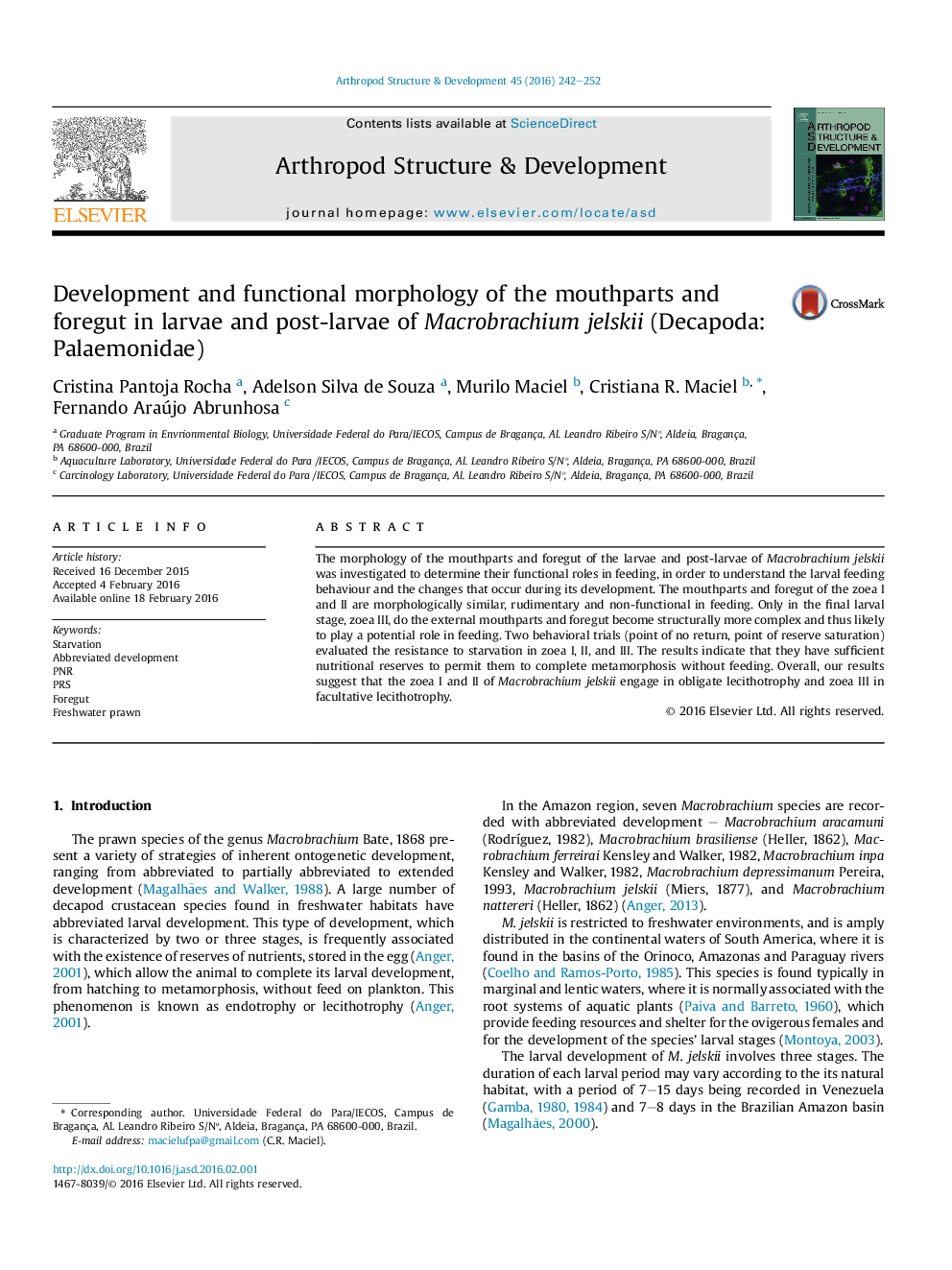| Article ID | Journal | Published Year | Pages | File Type |
|---|---|---|---|---|
| 2778501 | Arthropod Structure & Development | 2016 | 11 Pages |
•We investigated the endotrophic potential of Macrobrachium jelskii associated with the functionality of its digestive system.•Macrobrachium jelskii is able to complete its larval cycle without any exogenous nutrition.•The foregut is non-functional in the zoea I and II stages, in which obligate lecithotrophy occurs.•In the zoea III stage, the foregut is more complex and the vitellogenic reserve is exhausted.•The functionality of the foregut of the zoea III indicates facultative lecithotrophy.
The morphology of the mouthparts and foregut of the larvae and post-larvae of Macrobrachium jelskii was investigated to determine their functional roles in feeding, in order to understand the larval feeding behaviour and the changes that occur during its development. The mouthparts and foregut of the zoea I and II are morphologically similar, rudimentary and non-functional in feeding. Only in the final larval stage, zoea III, do the external mouthparts and foregut become structurally more complex and thus likely to play a potential role in feeding. Two behavioral trials (point of no return, point of reserve saturation) evaluated the resistance to starvation in zoea I, II, and III. The results indicate that they have sufficient nutritional reserves to permit them to complete metamorphosis without feeding. Overall, our results suggest that the zoea I and II of Macrobrachium jelskii engage in obligate lecithotrophy and zoea III in facultative lecithotrophy.
